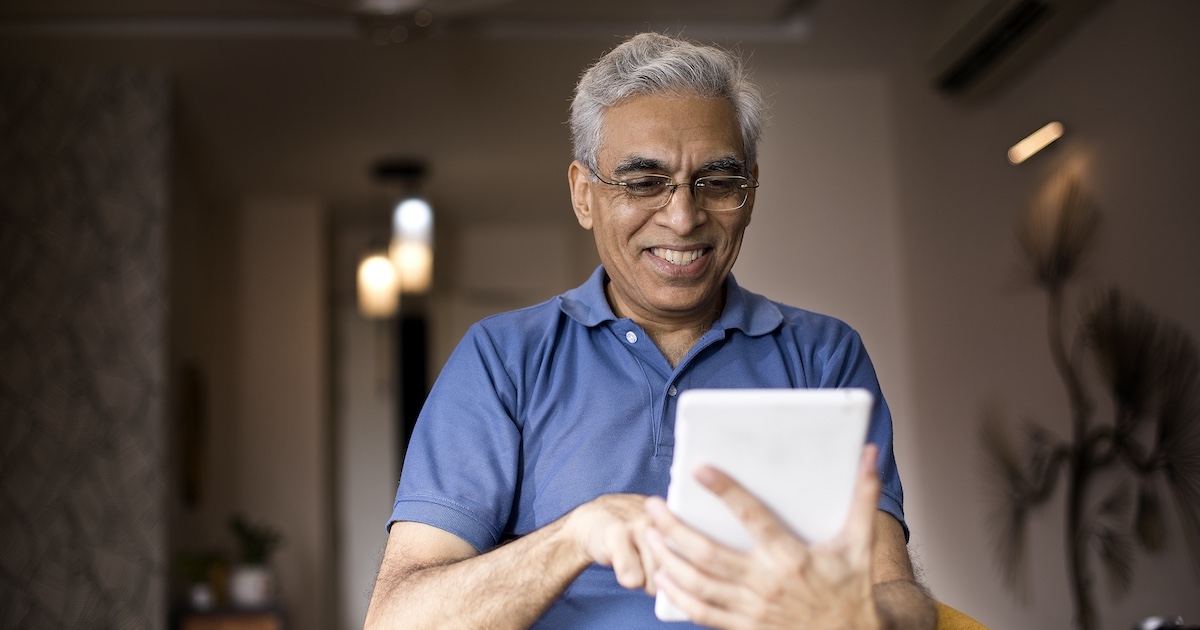
The Misfit Shine raised $846,000 on Indiegogo in January.
Like the Misfit Shine before it, Scanadu proved this week that in digital health, the combination of a hip, hyped product and a crowdfunding platform can lead to impressive results. The company raised their goal of $100,000 in just two hours, and they're now up to more than three times that.
Of course, not all digital and mobile health projects on Indiegogo or Kickstarter (which has quietly begun to go back on its former prohibition against health projects) achieve that level of success. Two months ago, we did a round-up of five mobile health projects on Indiegogo, and we've covered a number of crowdfunded companies in the meantime.
Four of the five companies in our March roundup surpassed their funding goals. The Amiigo fitness bracelet ended up raising $580,689, more than six times its $90,000 goal. The activity tracker surprised its backers by adding a previously unannounced sleep tracker shortly after the conclusion of the campaign. Breathometer, the smartphone breathalyzer, raised $138,377, more than five times its $25,000 goal. LifeBEAM's SMART cycling helmet, an activity and heart rate tracker built into a bike helmet, raised $64,676 of its $50,000 goal. Silverline, the company refurbishing smartphones for seniors, just made their goal of $50,000, with a final total of $54,001.
The only company from our roundup that failed to meet its goal was MoodTune, a mobile game for treating depression, which raised only $1,955 out of a goal of $152,000. As did Lively, an eldercare monitoring system whose Kickstarter campaign we covered last month: they were only able to raise $15,177 of their $100,000 goal.
Other campaigns MobiHealthNews has written up recently are still ongoing, but promising. Goggle-based swim tracker Instabeat is already overfunded, with $43,823 raised out of a $35,000 goal and 25 days to go. The company's stretch goal is $55,000. The Kinsa smart thermometer, which aims to create a realtime health map, is at $44,528 out of its $50,000 with 24 days left and the iPhone Placebo effect app is at $20,300 out of $50,000 with 31 days to go.
We're always hearing about new mobile and digital health crowdfunding projects at MobiHealthNews. Read on for a slideshow of seven projects either currently seeking funds or recently concluded.
UPDATE: Make that eight! An astute commenter reminded us about HAPIFork, the app-connected fork that vibrates when the user eats too quickly. HAPIFork was met with some skepticism at CES in January and was mocked by Stephen Colbert shortly thereafter, but the crowd has definitely spoken: With a week to go, HAPILabs has raised $125,383 out of an original $100,000 goal.
In addition, a look at HAPILabs' website suggests the fork is just the beginning: the company intends to introduce an activity tracker and a wristworn heart monitor.
[vimeo]http://www.vimeo.com/62463482[/vimeo]
One theme that seems to come up when it comes to crowdfunded sports trackers is niche trackers -- Instabeat is a wearable sensor for swimmers, the SMART helmet is a wearable sensor for cyclists. LIT, a clip-on or wristworn activity tracker, wants to be the tracker for extreme sports. The company recently completed its campaign, raising $50,594, just over its $50,000 goal.
In addition to running and walking, LIT provides specific metrics for surfing, skateboarding, snowboarding, motorcross, BMX, and skiing. It returns appropriate metrics like air time and maximum g-force. The tracker is water-resistant, shock-resistant, and rugged, and the app allows users to set up competitions for themselves and others, share results on social media, and collect points that can be used to enhance other functions.
Raised: $50,594
Goal: $50,000
Days remaining: 0
[vimeo]http://vimeo.com/59552062[/vimeo]
Smartwatch Pebble was one of the first major crowdfunding success stories in the technology world, so there's reason to believe a smartwatch with a built-in activity tracker would be a success. SmartFitty is a touchscreen watch that syncs with Apple and Android smartphones to deliver push alerts to the wearer. In addition, it features built in apps including a "panic button" SOS app and a running tracker app. The company was planning to launch with an open platform for the development of additional apps. The watch tracks steps taken, distance travelled, and calories burned, and an additional app tracks sleep.
Unfortunately, SmartFitty raised less than a tenth of its $100,000 goal. With rumors of an Apple iWatch launching in the not-too-distant future, which will likely include an activity tracker, it's possible that timing was just wrong for a smartwatch startup.
Raised: $9,911
Goal: $100,000
Days remaining: 0
SEAL from Thermocline Ventures, Inc.
[youtube]http://www.youtube.com/watch?v=VbSCb0XdduI[/youtube]
"The only tool we give lifeguards to help them is sunglasses and a whistle," Thermocline CEO Dr. Graham Snyder says in the Indiegogo video for SEAL. His company is aimed at creating a new digital tool that will alert lifeguards or parents when a child is in danger of drowning. The SEAL wearable swim monitor comes in family packs of swimmer bands and a guard band worn around swimmers' and the lifeguard's necks. Each band can be set based on the user's swimming proficiency to set off an alarm when they've had their head under water for a certain amount of time. And the device has a failsafe release to prevent any risk of choking.
When the alarm goes off, the device lights up and makes noise, as does the lifeguard's band and a base station by the pool, so the parent or lifeguard can be alerted of the danger even if they themselves are swimming. The system, which consists of the bands, the base station, and a charging dock, is portable, so families can take it to a hotel or neighborhood pool. The company's campaign is coming along steadily. Justin Calvillo of Thermocline told MobiHealthNews that the company already has a YMCA lined up as a charter customer. He also said the company may upgrade the device to include activity tracking capabilities down the line.
"Going forward, we're going to add monitoring and fitness data that will give people some value besides safety, doing some intense monitoring that's only possible at the neck," he said.
Raised: $14,115
Goal: $85,000
Days remaining: 24
[vimeo]http://vimeo.com/66709232[/vimeo]
BabyWatch has created an ultrasound doppler that plugs into the iPhone's headphone jack, so pregnant women can hear their baby's heartbeat at home, starting at 12 to 16 weeks into the pregnancy, according to the company. The Croation company claims that the doppler device is both FDA and CEE cleared, although MobiHealthNews wasn't able to confirm that with government documents.
The BabyWatch app allows mothers to record their baby's heartbeat and share it on social media. In addition to the ultrasound doppler being sold on Indiegogo, the company is working on a whole prenatal home monitoring suite, including a Withings weight scale, a blood glucometer that appears to be a white-labeled unit from iHealth Lab, and a wireless pulse oximeter.
Raised: $643
Goal: $100,000
Days remaining: 59
[youtube]http://www.youtube.com/watch?v=Gjvp76pMrjk[/youtube]
GymPlay is an app that provides a training and diet regimen for users. Creator Christine Halnon tells MobiHealthNews in an email that too many fitness apps are focused on motivation, but not enough are focused on education.
"Many apps track progress, gym check-ins, running courses, and biometrics, but they assume clients know what they are doing. I assume nothing. The industry is lacking an app that provides a simple, yet comprehensive program on what to do when you show up at the gym, track, or kitchen," she said.
GymPlay stresses clear instructions on exercises, grocery lists, and recipes, rather than giving users choices. The app promises positive results from three gym visits per week.
Raised: $425
Goal: $10,000
Days remaining: 28
 People with diabetes have a lot of things to keep track of -- how much and how often they're eating, their blood glucose levels, and whether they've taken their medication, just to name a few. Neil Giacomelli, an iPhone app developer with Type 1 diabetes in the UK felt that even though there were a number of apps out on the iOS AppStore to help with that process, most were slow and clunky to use -- the last thing a person who already spends a lot of their life dealing with a disease wants.
People with diabetes have a lot of things to keep track of -- how much and how often they're eating, their blood glucose levels, and whether they've taken their medication, just to name a few. Neil Giacomelli, an iPhone app developer with Type 1 diabetes in the UK felt that even though there were a number of apps out on the iOS AppStore to help with that process, most were slow and clunky to use -- the last thing a person who already spends a lot of their life dealing with a disease wants.
Giacomelli's Diabetic Journal, now called Diabetik, was fully funded in February of this year. What makes it different, he says on the app's Kickstarter page, is that it monitors medication habits and intelligently autopopulates fields to minimize the amount of input required. No word yet on whether it will go the next step and interact with connected glucometers, but the company has announced on its website that the app will have an open API when it launches on the AppStore.
Raised: £7,743 ($11,690)
Goal: £7,500 ($11,320)
Days remaining: 0
[youtube]http://www.youtube.com/watch?v=cc2XpvTiYqM[/youtube]
According to the PricingHealthcare.com team, the lack of healthcare pricing transparency isn't one that hospitals will solve themselves, because they have no motivation to do so. Price transparency would increase competition, driving down prices and hospital profits.
Instead, PricingHealthcare.com hopes to use crowdsourcing and big data to make pricing data available to everyone.
"The data that could transform the healthcare industry is out there," the company wrote on their Indiegogo page. "It’s sitting in our file cabinets and in the pile of bills on our kitchen counter. Our model is to help patients come together at the grass roots level, and anonymously share the pricing data from their healthcare bills. That data is then combined and shown for your specific community, anywhere in the country."
The project didn't get very close to its $70,000 funding goal, so it's unclear where the team will go from here. The FAQ on their Indiegogo page suggests they may try for traditional investor funding.
Raised: $2,640
Goal: $70,000
Days remaining: 0


